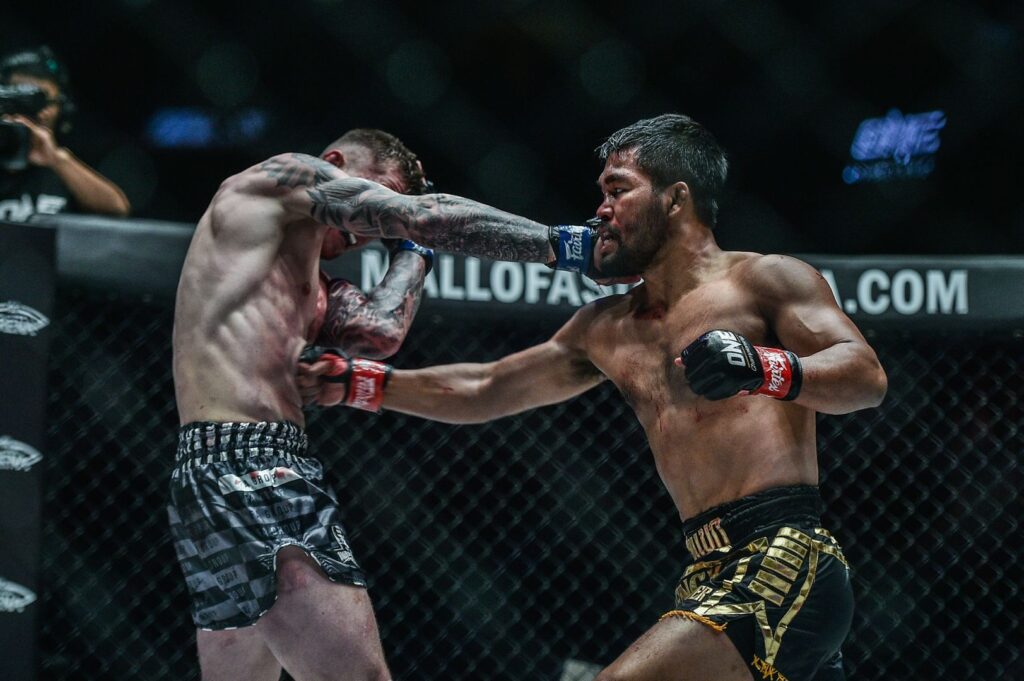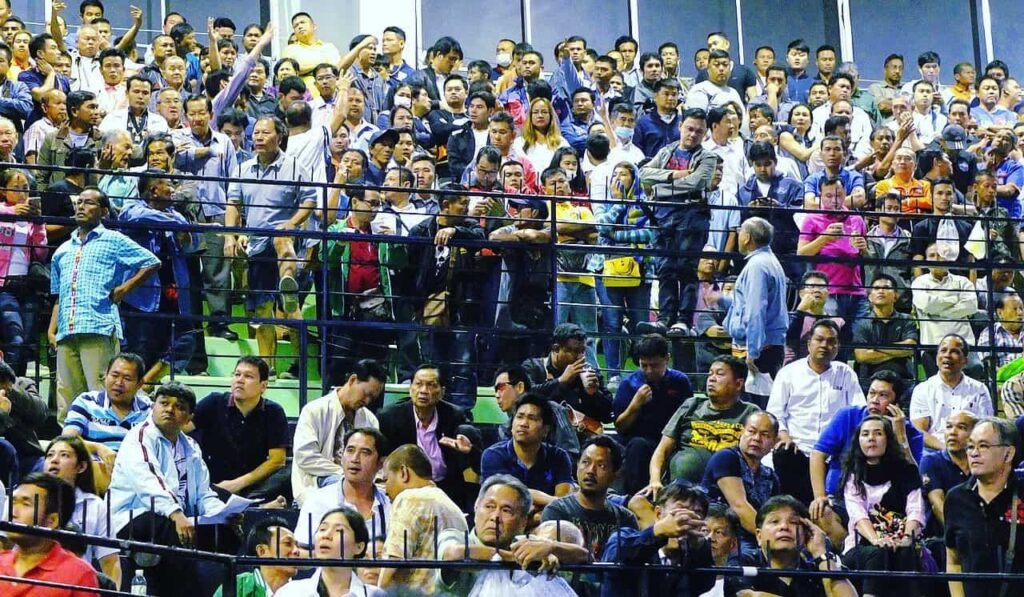Muay Thai, also known as Thai Boxing, is a combat sport that originated in Thailand. Over the years, the sport has undergone several changes in terms of techniques, scoring, and rules. The old style of Muay Thai was very different from the new style that is practiced today. This is because in recent years, One Championship has become the biggest arena for Muay Thai. And with their new rule set Muay Thai has evolved. In this article, we will explore the differences between the two styles.
1) Rhythm and Movement:
The old style of Muay Thai was characterized by a give-and-take approach. Fighters would trade blows, trying to outlast each other. Footwork was not a significant part of the game, as fighters relied on Thai rhythm (Standing in one spot weight on the back leg and lifting the front leg constantly).
However, the new style of Muay Thai emphasizes in-and-out movement and side-to-side shifting. This is due to the fact that now fighters fight with 4 oz gloves opposed to 8-10 oz gloves. Fighters are not able to absorb as much damage, in addition punching is equal to kicking on the score cards. The best way to put the new scoring system is Damage is Damage. Fighters are encouraged to get their heads off the centerline to avoid getting hit with straight punches. This shift in style has been exemplified by fighters like Liam Harrison and Jonathan Haggerty.
In the old style of Muay Thai, head movement was very limited, with the exception of the lean back or pull. There was very little slipping, rolling to avoid punches, or even head off-line punching. These days, fighters recognize the need to get their head off the centerline to avoid damage, and are adapting their techniques to include more head movement, effective footwork to avoid damage, moving in and out, and shifting side-to-side for effectively avoiding strikes.
2) More Punching
Over the years, there has been a significant change in the way Muay Thai is fought. In the past, fighters relied heavily on kicks and knees to win fights. However, with the introduction of smaller gloves and a shift in judging criteria, there has been an increased emphasis on punching.

The use of smaller gloves has had a significant impact on the sport. With less padding, punches have become more effective in causing damage to opponents. As a result, fighters have had to adjust their training methods to focus more on developing their punching techniques.
Moreover, the emphasis on causing damage through punching has led to a change in fighting style. Fighters are now more willing to stand and trade punches with their opponents, rather than relying solely on kicks and knees. This has made fights more exciting for fans, as they see more knockouts and exciting exchanges.
Finally, judges are no longer heavily favoring kicks and knees, as they once did. In the past, fighters could win fights simply by landing a few well-timed kicks, knees, or by winning the clinch exchanges. However, with a shift in judging criteria, judges are now looking for fighters who can deliver effective strikes and do more damage overall. This has encouraged fighters to focus more on their punching techniques, knowing that they will be judged on their overall effectiveness rather than just their ability to land kicks and knees.
In conclusion, the use of smaller gloves, emphasis on causing damage through punching, and a shift in judging criteria have all influenced the fighting style and training methods of Muay Thai fighters. As a result, we are seeing more emphasis on punching in the sport, which has made fights more exciting for fans and led to a more well-rounded approach to training for fighters.
3 Gambling: Gambling played a significant role in the old style of Muay Thai. In the first two rounds, there was typically not much action as fighters used them as a feeling-out process to study their opponents and gauge their timing. The third and fourth rounds were the most crucial, and fighters would focus on scoring points to gain an advantage. By the fifth round, the outcome was often already decided, and fighters would often dance around and not exchange to avoid unnecessary damage. Gamblers were even known to run into the corner and give fighters instructions and incentives to win or lose. They were also known to sway judge’s decisions based on their bets.
However, in the new style of Muay Thai, gambling has been eliminated from the sport. Although it may happen outside the arena, gambling inside the arena is prohibited. This has allowed fighters to focus solely on fighting and scoring points, without the influence of gamblers swaying the outcome of the match. Additionally, all rounds are now scored equally, further emphasizing the importance of fighting throughout the entire match.

4) Clinching:
In the old style of Muay Thai, clinching was heavily emphasized as it was a crucial scoring technique that allowed fighters to establish dominance and win exchanges. However, the new style of Muay Thai has shifted the focus away from clinching and reduced the scoring power of knees. This change has resulted in more fast-paced and action-packed fights. Knees from the clinch are now used less frequently, and sweeps are not as heavily scored as they once were.
5) The Evolution of Muay Thai Striking:
The new style of Muay Thai has seen a significant evolution in striking techniques. One of the most popular techniques that has emerged is stance switching, which allows fighters to have the striking ability of both southpaw and orthodox fighters seamlessly and fluidly. This technique confuses opponents, catches them off guard, exploits their weaknesses and makes them much harder to fight. Fighters like Jonathan Haggerty (Nong-O Gaiyanghadao’s last opponent) have exemplified this technique with great success.
Additionally, the use of calf kicks has become more prevalent in Muay Thai. These low kicks target the calf muscle, causing significant damage to the opponent’s leg and reducing their mobility. This technique has been adopted from kickboxing and MMA, and has now become a key component of Muay Thai striking.
Furthermore, with the emphasis on punching in the new style of Muay Thai, fighters are developing their boxing skills and incorporating more boxing techniques into their arsenal. This has led to the rise of fighters who are adept at both punching and kicking, making them more well-rounded and dangerous in the ring.
Overall, the evolution of Muay Thai striking has led to a more dynamic and exciting sport, with fighters constantly pushing the boundaries of what is possible. The incorporation of new techniques and styles has made the sport more accessible and appealing to a wider audience, and has attracted a new generation of fans and fighters alike.
6) Thai Shell and Long Guard:
The Thai shell and long guard were once effective techniques for blocking strikes in the past. However, with the advent of smaller gloves, these techniques have become less effective, as punches can still find their way through. In modern Muay Thai, fighters rely more on movement to evade incoming strikes, and defense is often a combination of subtle head movement and slick footwork. As the sport continues to evolve, it will be fascinating to see how fighters continue to adapt and develop new techniques to gain an edge over their opponents.
In conclusion, the evolution of Muay Thai has transformed the sport into a more dynamic and technical form of combat. With a focus on movement, punching, and stance switching, fighters are constantly developing new techniques to gain an advantage over their opponents. The reduction in the use of the clinch and gambling has also led to more action-packed fights, with the scoring system prioritizing damage. As Muay Thai continues to evolve, it will be exciting to see how the sport continues to adapt and push the boundaries of combat sports.
